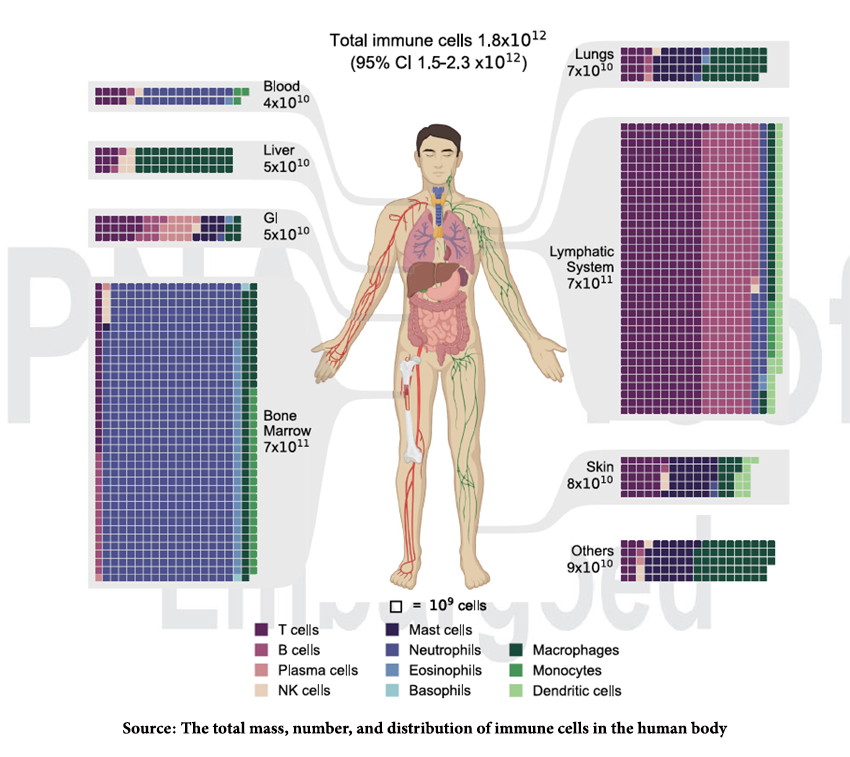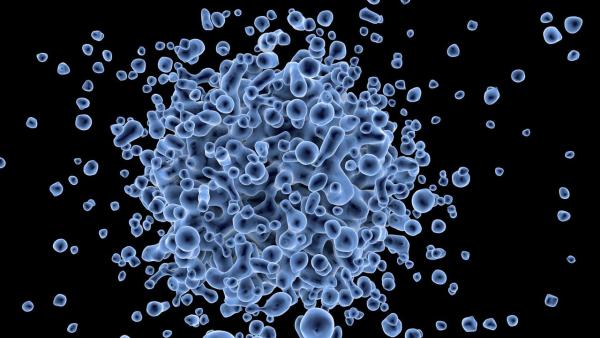Without muscles, we could not move.
The surface area of the intestines is as large as a tennis court.
Without skin, all of our parts would fall out.
“During an average lifetime, the human heart will beat more than 2.5 billion times. Give a tennis ball a good, hard squeeze. You're using about the same amount of force your heart uses to pump blood out to the body.”
No one summed up the situation better than this master of word choice.
“For years and years and years, I thought my brain was the most important organ of my body, until one day I thought, hmm. Look who’s telling me that!”
– George Carlin
I suppose our choice may be situational; skin may be more critical when we think of Vitamin D or the summer; muscles could be more important during the football season or the Olympics; intestines and food we probably consider them all the time. In any event, the pandemic has brought our immune system into prominence, and a new study provides a census of its cellular content.

“In our survey, we utilized the standard reference human, historically characterized as a male between 20 and 30 years old, weighing 73 kg, and having a height of 176 cm … we added the term “healthy,” as the individual’s health affects the immune cell population.”
We have 1.8 x 1012 immune cells, that is 1,800,000,000,000
- The lymphatic system and bone marrow consist primarily of immune cells, roughly 40% each.
- Epithelial cells that act as barriers, as well as those within internal organs where they may provide a secondary barrier, have one order of magnitude fewer immune cells. Skin, lung, and the GI tract have about 4% each.
- Although skeletal muscle and adipose (fat) comprise most of our cellular volume, those cells are quite large, and those tissues only have 0.2% of our total cells. On the other hand, blood contains 90% of our cells, but nearly all of them are red blood cells. The white cells of the immune system reflect 0.1% of the total.
And as to be expected, the cell types also vary “geographically.”
- 80% of bone marrow are neutrophils. Neutrophils are our immune first responders, and the “reason” that they have such a great density in the marrow is because they are the reserve forces waiting to be mobilized.
- 85% of the lymphatic system is, you guessed it, lymphocytes, our secondary responders. Like the neutrophils, their presence in the lymphatics may represent a staging area.
- 70% of the GI tract also features lymphocytes, as well as mast cells at roughly 25%. Mast cells play an essential role in messaging the other systems and allergic responses. They are the cells found at our borders. Those mast cells do additional duty for those other barrier organs, the skin and lungs supplying about 30% of their total immune cells
- Macrophages are found in the lung (40%) and liver (75%). Macrophages are the grunts responsible for chewing up and disposing of bacteria. It should be no surprise that they are found in the lung, a common site of entry. The presence in the liver may be because 70% or more of the blood flow from the intestines, which contains the materials we have ingested, goes first to the liver through the portal system.
The truth is that no one of our organ systems is pre-eminent; we need them all. That is why we are complex, an intertwined network of actors and messages.
Source: The total mass, number, and distribution of immune cells in the human body PNAS DOI: 10.1073/pnas.2308511120




